We live in a one-and-done era, yet one often hears it said in college basketball that experience is everything. Even coaches with access to one-and-done talent, such as John Calipari and Mike Krzyzewski, still feel more comfortable when their dazzling freshmen are accompanied by at least a few veterans, and indeed both of those coaches have won national titles in the past four seasons with starting lineups that featured three freshmen and two returnees.
Then again if experience is really so important, both Kentucky and Duke should be concerned at the moment. Both rosters are less experienced than what we saw from these programs one year ago, and in fact the Wildcats and Blue Devils rank among the greenest major-conference teams in the nation this season. Is any such concern justified?
By way of answering that question, allow me to introduce you to the most-and least-experienced major-conference teams for 2015-16. To measure experience, I use a handy item I call possession-minutes. Basically it's the percentage of minutes that a player is on the floor, multiplied by the percentage of possessions he used last season (as seen at KenPom.com). I add those products up for each player on a given team from last season, and calculate what percentage of that total number is returning as possession-minutes (%RPMs) for this season. For 2015-16, the average major-conference team will return about 60 percent of its possession-minutes from last season.
Enough with the method to this madness. Here are the most experienced major-conference teams you'll see this season:
Most experienced major-conference teams
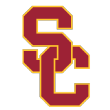
1. USC Trojans
%RPMs: 98
Only the offseason transfer of Kahlil Dukes to Niagara prevented Andy Enfield from joining past members of the 100 Percent Returning Experience Club. (If there is such an august body.) The Trojans' rotation of Katin Reinhardt, Nicola Jovanovic, Julian Jacobs, Elijah Stewart and a healthy Jordan McLaughlin (returning from shoulder surgery) will seek much better results on offense in 2015-16. There is certainly room to improve; last season USC was far below-average across the statistical board on that side of the ball.
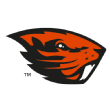
2. Oregon State Beavers
%RPMs: 93
In just his second season at the helm in Corvallis, Wayne Tinkle already has more or less everyone returning. Roster continuity can be half the battle for a struggling program, and the Beavers haven't won an NCAA tournament game since 1982. Whether that changes this season (a big improvement in offense would certainly help), Tinkle will at least have a seasoned group of veterans led by the shamefully underrated Gary Payton II.
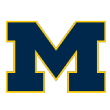
3. Michigan Wolverines
%RPMs: 92
Last season was unrepresentative of what we've come to expect from John Beilein and the Wolverines, in large part because Caris LeVert and Derrick Walton Jr. missed a combined 29 games due to injuries. But if everyone stays healthy in 2015-16, a return to form is to be expected from UM. You know a Beilein team is firing on all cylinders when the 2-point accuracy exceeds, say, 53 percent (last season the Wolverines shot just 46 percent inside the arc in Big Ten play) and the turnover rate declines to near-Bo-Ryan-level invisibility.
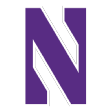
4. Northwestern Wildcats
%RPMs: 88
This could be the year we see how Chris Collins intends to win in Evanston. In his first campaign in 2013-14, his team played some truly phenomenal late-season defense, then last season the Wildcats' formerly disastrous offense came close to the Big Ten average. Can Collins put it all together in Year 3? He'll try to do just that with a rotation featuring Alex Olah, Bryant McIntosh, Tre Demps and Vic Law.
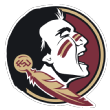
5. Florida State Seminoles
%RPMs: 87
Leonard Hamilton has somehow done the impossible, signing a highly acclaimed freshman class in a year when nearly every veteran already on hand is returning. Foremost among the freshmen are Dwayne Bacon and Malik Beasley, and the headliner among the veterans is, of course, Xavier Rathan-Mayes. FSU's crippling weakness last season was turnovers. If Hamilton's young guns can take care of the rock, the Seminoles could look much better very soon.
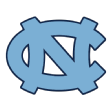
6. North Carolina Tar Heels
%RPMs: 86
Well look at that, a national championship contender on our list of most experienced teams. Maybe there's something to having plenty of veterans around after all. J.P. Tokoto elected to take a stab at professional ball, but Marcus Paige, Justin Jackson, Kennedy Meeks and Brice Johnson, among others (I could go on), have all returned. This is likely your preseason No. 1 team.
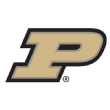
7. Purdue Boilermakers
%RPMs: 82
Matt Painter's frontcourt already looked pretty formidable with A.J. Hammons and Isaac Haas coming back for another season. Then when incoming freshman Caleb Swanigan signed with the Boilermakers, expectations for this team were ratcheted upward still another step. As a team the Boilers hit just 32 percent of their 3-pointers in Big Ten play, but if Kendall Stephens can stretch opposing defenses we already know that this Purdue team excels at making life miserable for opposing offenses.
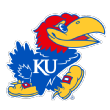
8. Kansas Jayhawks
%RPMs: 81
With Perry Ellis, Wayne Selden Jr., Frank Mason III and Jamari Traylor, Kansas has basically the same level of returning experience as North Carolina, along with a freshman class that may include top-10 recruit Cheick Diallo (who is yet to be ruled eligible by the NCAA) and top-25 prospect Carlton Bragg. I'm hearing plenty this preseason about the Tar Heels and Maryland, and rightfully so. But do not look past the Jayhawks.

9. Indiana Hoosiers
%RPMs: 81
Last season opposing defenses were often, yes, defenseless against an IU attack led by Yogi Ferrell, James Blackmon Jr. and Troy Williams. All of the above have returned, and they'll join with lauded freshman big man Thomas Bryant to try to improve a previously deficient IU defense. Last season, the Hoosiers were a perimeter-oriented team that shot 40 percent from beyond the arc in Big Ten play. In 2015-16, the state of affairs in Bloomington may again prove deceptively simple to state yet exceedingly difficult for opposing teams to prevent.

10. Vanderbilt Commodores
%RPMs: 79
The Commodores have missed the past three NCAA tournaments, but there's a good chance that streak will draw to a close in March. Damian Jones is looking like a 2016 first-round (or possibly even lottery) NBA draft pick, and Kevin Stallings can't swing a cat in practice without knocking over a horde of deadly perimeter shooters (e.g., Riley LaChance, Matthew Fisher-Davis, Luke Kornet and Wade Baldwin IV). For the first time since 2011-12, Vandy will make its presence felt in the SEC race.

Least experienced major-conference teams

1. St. John's Red Storm
%RPMs: 5
Former head coach Steve Lavin was hired in the spring of 2010 because the Johnnies were preparing to say goodbye to then-seniors-to-be like Dwight Hardy, Paris Horne, Justin Brownlee, D.J. Kennedy and Justin Burrell. St. John's needed its new coach to put together a good -- and large -- recruiting class. Well, the class that Lavin signed that year (featuring Sir'Dominic Pointer, D'Angelo Harrison and Phil Greene IV) just departed. And with Rysheed Jordan now playing professionally and Chris Obekpa electing to transfer to UNLV, the cupboard is bare for new coach and SJU legend Chris Mullin.
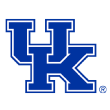
2. Kentucky Wildcats
%RPMs: 16
This is the second-youngest roster John Calipari has had at Kentucky. Only the 2012-13 team was greener: Kyle Wiltjer was the lone sophomore on that roster, joining freshmen like Nerlens Noel, Archie Goodwin, Willie Cauley-Stein and Alex Poythress. Speaking of Poythress, his return this season from the injured list should make UK deeper and more seasoned than it looks statistically. And with freshmen such as Skal Labissiere, Jamal Murray and Isaiah Briscoe, inexperience may not turn out to be such a bad thing. This Kentucky team is likely to be ranked in the top five nationally in the first preseason poll.
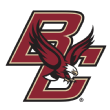
3. Boston College Eagles
%RPMs: 16
Chalk up BC's presence here to bad timing. In his first season at the helm in Chestnut Hill, Jim Christian featured junior Olivier Hanlan and three seniors. Hanlan left early (he was drafted in the second round), and now the Eagles have only 7-footer Dennis Clifford returning from last season's starting lineup. In the offseason, Christian found himself with no fewer than nine scholarships to fill. It's certainly his program now.
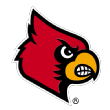
4. Louisville Cardinals
%RPMs: 20
On paper Rick Pitino played just two seniors last season (Wayne Blackshear and Chris Jones), but Terry Rozier and Montrezl Harrell both entered the draft and Anton Gill and Shaqquan Aaron transferred. Now Mangok Mathiang and late-season starter Quentin Snider represent most of the Cardinals' returning experience. Pitino will rely on those two, transfers Trey Lewis (Cleveland State) and Damion Lee (Drexel), and talented freshmen like Donovan Mitchell and Deng Adel.

5. Duke Blue Devils
%RPMs: 24
This level of inexperience is relatively familiar territory for John Calipari, of course (see above), but Mike Krzyzewski's presence here is the exception to his rule. Until 2014-15, his teams tended to feature a single one-and-done scorer (think Kyrie Irving, Austin Rivers or Jabari Parker) rather than three freshman stars such as Jahlil Okafor, Justise Winsow and Tyus Jones. Throw in departing senior Quinn Cook, and the bad news for Duke fans is that the Blue Devils are young. The good news is the youth -- including Grayson Allen and likely 2016 lottery pick Brandon Ingram, balanced by token graybeard Amile Jefferson -- will be playing underneath a 2015 national championship banner. Look for Duke to be ranked in the preseason top 10.
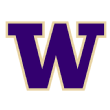
6. Washington Huskies
%RPMs: 24
Lorenzo Romar lost seniors Shawn Kemp and Mike Anderson, while Nigel Williams-Goss and Jernard Jarreau transferred to Gonzaga and Tulane, respectively. On the plus side, Romar is bringing in four highly regarded freshmen: Dejounte Murray, Marquese Chriss, Matisse Thybulle and Noah Dickerson. The young Huskies will be talented, but job No. 1 in Seattle will be improving a defense that never regained its bearings after Robert Upshaw was dismissed from the team and allowed a whopping 1.12 points per possession in Pac-12 play.
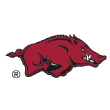
7. Arkansas Razorbacks
%RPMs: 30
The Razorbacks may turn out to be even less experienced than the number shown here. Anton Beard, Mike Anderson's lone returning starter from last season, is still listed on the roster but he was suspended indefinitely after he was arrested along with Jacorey Williams and Dustin Thomas on charges of forgery. Williams was subsequently dismissed from the team, and bear in mind Anderson had already said goodbye to early draft entrants Bobby Portis and Michael Qualls, as well as seniors Rashad Madden and Alandise Harris. Anderson may have to make due with veterans Anthlon Bell, Moses Kingsley and Jabril Durham and top-100 freshman Jimmy Whitt.
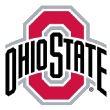
8. Ohio State Buckeyes
%RPMs: 31
D'Angelo Russell parlayed his single season in Columbus into being selected by the Lakers as the No. 2 overall pick in the draft, while Shannon Scott, Sam Thompson, Amir Williams, Trey McDonald and Anthony Lee all left campus after their senior seasons. Jae'Sean Tate, Marc Loving, Keita Bates-Diop and Kam Williams are still on hand for Thad Matta, and they'll be joined by freshmen Daniel Giddens, Austin Grandstaff, JaQuan Lyle and A.J. Harris. The departures were both numerous and significant, yet somehow Matta has enough talent in-house to equal if not exceed the No. 10 seed the Buckeyes earned last March (the program's lowest seeding since OSU missed the tournament entirely in 2007-08).
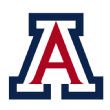
9. Arizona Wildcats
%RPMs: 34
Having won back-to-back outright regular-season Pac-12 titles, Sean Miller may find things a bit more competitive on the left coast this season. California appears to have a good blend of freshmen and veterans, and in Tucson Miller is faced with replacing not only Stanley Johnson but also Rondae Hollis-Jefferson, T.J. McConnell and Brandon Ashley. The incoming freshman class is talented, but for the first time since 2011-12 it appears there's no one-and-done performer on the roster. With Kaleb Tarczewski, Gabe York and Allonzo Trier, the Wildcats could still be the favorites in the Pac-12, but they'll have to work for a third straight title.
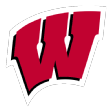
10. Wisconsin Badgers
%RPMs: 36
Wisconsin is about as inexperienced as a team that returns two starters can be. Nigel Hayes and Bronson Koenig are back, but the Badgers last season were a team that played eight guys and five of them are now gone. Frank Kaminsky, Sam Dekker, Josh Gasser, Traevon Jackson and Duje Dukan have all wrapped up their careers in Madison, and while Zak Showalter is still on hand Bo Ryan seems primed to take a step back. Or does he? Of the nation's 75 major-conference teams, Wisconsin ranks No. 1 over the past five seasons for consistency in its end-of-season KenPom ratings. The Badgers last season set a new statistical standard, but even a "normal" Ryan team is very, very good.
